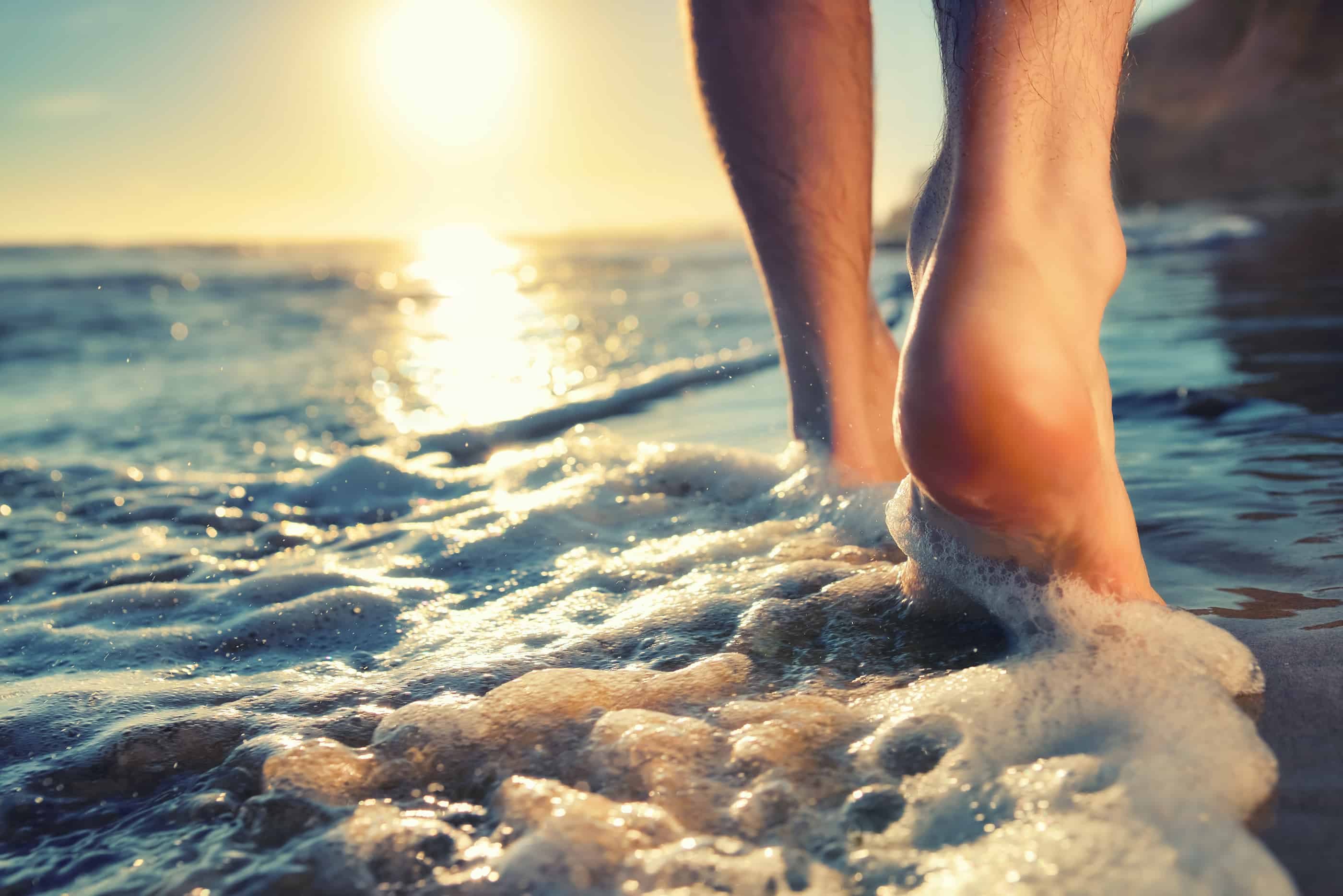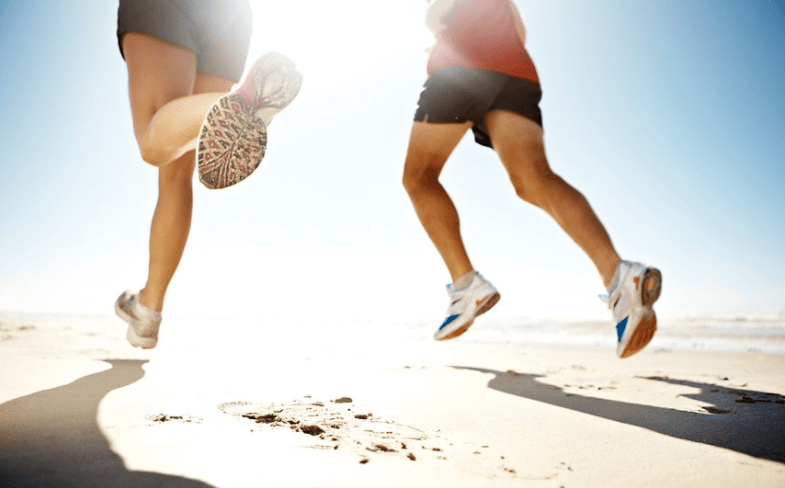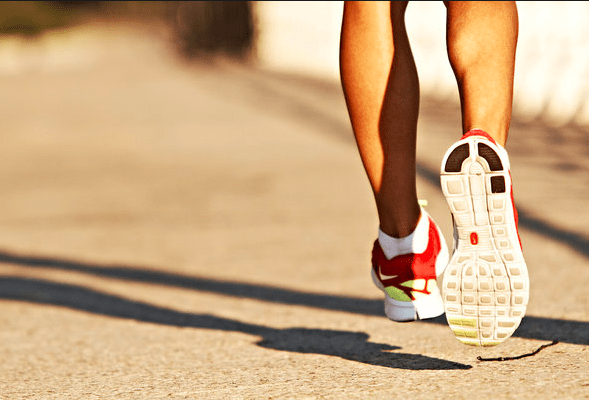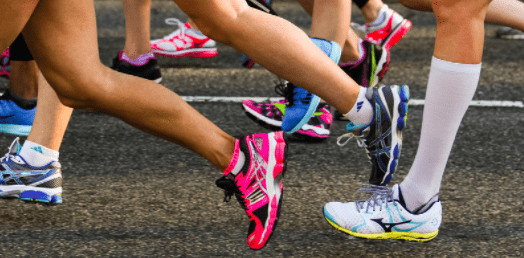Ankle Pain

For more information on the ankle pain treatments that are available, please use the toggle switches below:
A painful condition of the ankle that manifests as stiffness and pain across the ankle joint particularly in the mornings, after rest and as the day progresses.
Diagnosis is normally from clinical examination or biomechanical assessment and the Podiatrist will discuss the best course of action to relieve the symptoms. This evaluation provides both static and dynamic information which is then used to fabricate custom made orthotics which will stabilise the foot. Custom made orthotics are effective in reducing the pain. In cases where it has occurred for a long time, osteoarthritic changes can occur making treatment very difficult and the patient may not respond to conservative methods of treatment.

Peroneal tendinitis (peroneal tendinopathy), although not as common as the other forms of tendon problems can cause pain in the outside of your foot and lower leg during running. There are two peroneal tendons in the foot. A tendon is a band of tissue that connects a muscle to the bone. One peroneal tendon attaches to the outer part of the midfoot, while the other runs under the foot and attaches near the inside of the arch.
The function of the peroneal tendons is to stabilise the foot and ankle during weight-bearing activities like running.
Causes :-
Peroneal tendon injuries may be acute (occurring suddenly) or chronic (developing over a period of time). They most commonly occur in people who participate in sports that involve repetitive ankle motion. Feet with high arches are at risk of developing peroneal tendon injuries. Peroneal tendon injuries may be tendonitis (inflammation), tears or subluxation (partial dislocation).
Tendonitis is an inflammation of one or both tendons. The inflammation is caused by activities involving repetitive use of the tendon, overuse of the tendon or trauma (such as an ankle sprain) below the outer ankle bone. Pain is often worse during activity but gets better with rest. The damaged tendon may also feel tender to the touch with a sharp or aching sensation along the length of the tendon or outside of the foot.
Symptoms :-
- Pain
- Swelling
- Warm to Touch
Acute tears are caused by repetitive activity or trauma and occur suddenly
symptoms of acute tears :-
- Pain
- Swelling
- Ankle instability or weakness
As time goes by, these tears may lead to a change in the shape of the foot in which the arch may become higher leading to a chronic condition.
Degenerative tears (chronic) are usually due to overuse and occur over long periods of time. Having high arches increase the risk of developing degenerative tears.
Symptoms of degenerative tears include :-
- Sporadic pain on outside of the ankle
- Weakness or instability in the ankle
- An increase in the height of the arch
Because peroneal tendon injuries are sometimes misdiagnosed and may worsen without proper treatment. In addition, an x-ray or other advanced imaging studies may be needed to fully evaluate the injury. Proper diagnosis is important because prolonged discomfort after a simple sprain may be a sign of additional problems.
Treatment :-
In the acute phase, most injuries require R.I.C.E. (Rest, Ice, Compression, and Elevation)
- Rest the ankle using crutches until walking is no longer painful.
- Apply an ice pack for 10 minutes a few times a day on the painful swollen area.
- Compression ankle/Support to protect ankle & ligaments
- Elevate ankle following injury to reduce the swelling.
- Oral or injected anti-inflammatory medication.
- Immobilisation. A cast or splint to allow the injury to heal.
- Bracing may be an option when a patient is unable to have surgery.
- Surgery may be needed to repair ruptured or dislocated tendons in acute cases.
- Low level laser therapy
Low level laser therapy helps to reduce swelling & pain and accelerate repair of damaged tissue. The immediate pain-relieving effects, which can occur within minutes of application, are brought about by three responses :-
- Neural blockage in peripheral and sympathetic nerves, particularly nociceptors. (blocks nerve pain)
- Reduction of muscle spasm.
- Improvement in local oedema, especially in acute injury. (reduces swelling)
Influencing all three phases of wound healing: the inflammatory, proliferative and remodelling phases, photobiomodulation promotes ATP synthesis, induces cell proliferation, accelerates collagen synthesis, increases tensile strength and influences the concentration of prostaglandins thus reducing pain associated with inflammation.
As symptoms improve exercises can be added to strengthen the muscles and improve range of motion and balance.
Exercise 3-5 times per day.
Standing Stretch : If you are able to stand. Stand against a wall and lean forward until you feel a stretch in your calf. Hold this stretch for 15 seconds.
Flexibility exercises using a towel and writing the alphabet with the toes will increase the range of motion.
Ankle strengthening exercises are step ups and walking on toes which will strengthen the muscles.
Balance and stability exercises are important to retrain the ankle muscles to work together to support the ankle joint. This includes exercises that are performed by standing on one foot and using the injured ankle to lift the body onto its toes. Balance exercises include the use of a wobble board, which helps to maintain balance.

The most common ankle sprains involve the lateral or outer part of the ankle. There are three lateral ligaments that attach the bones of the lower leg to the foot. The Anterior Talofibular ligament, Calcaneofibular ligament, and Posterior talofibular ligament. These three ligaments are often injured or torn in a lateral ankle sprain.
The anterior talofibular ligament is one of the most commonly involved ligaments in this type of sprain. Approximately 70-85% of ankle sprains are inversion injuries.
The primary cause of lateral ankle sprains is when the foot rolls inwards tearing the lateral ligaments. This can happen when people play sports that involve a lot of side to side or twisting and turning movements like tennis or football, or when stepping on uneven ground.
Ankle sprains occur usually through excessive stress on the ligaments of the ankle when the foot is moved beyond its range of motion.
Ankle sprains are classified in grades :-
Grade I: The most mild. The ligaments have micro tears. There is swelling, mild tenderness, and stiffness around the ankle but people are able to walk with minimal pain.
Grade II: More severe. Ligaments are partially torn, will be tender when touched and may make walking difficult.
Grade III: The most severe, ligaments are completely torn, and will be tender to touch. Ankle is very unstable and walking will be difficult.
It is important to determine whether a sprain is not a break in the bone. A person who sprains their ankle will feel heat and pain and the ankle will begin to swell and form a bruise along the outside of the ankle and foot. If someone has a grade II or III ankle sprain the ankle may feel unstable and wobbly, and walking may be difficult. Mild ankle sprains will heal quickly but higher grade sprains will take longer. The nerves in the area become more sensitive and the ankle will throb, particularly if pressure is applied on the area and moving the joint becomes restricted.
Treatments :-
For most injuries the R.I.C.E. (Rest, Ice, Compression, and Elevation)
- Rest the ankle using crutches until walking is no longer painful.
- Apply an ice pack for 10 minutes a few times a day on the painful swollen area.
- Compression ankle/Support to protect ligaments
- Elevate ankle following injury to reduce the swelling.
- Anti-inflammatory medication.
- Low level laser therapy helps to reduce swelling & pain and accelerate repair of damaged tissue.
The immediate pain-relieving effects of Low level laser therapy, which can occur within minutes of application, are brought about by three responses :-
- Neural blockage in peripheral and sympathetic nerves, particularly nociceptors. (blocks nerve pain)
- Reduction of muscle spasm.
- Improvement in local oedema, especially in acute injury. (reduces swelling)
Influencing all three phases of wound healing: the inflammatory, proliferative and remodelling phases, photobiomodulation promotes ATP synthesis, induces cell proliferation, accelerates collagen synthesis, increases tensile strength and influences the concentration of prostaglandins thus reducing pain associated with inflammation.
Exercise 3-5 times per day.
Standing Stretch: If you are able to stand. Stand against a wall and lean forward until you feel a stretch in your calf. Hold this stretch for 15 seconds.
Flexibility exercises using a towel and writing the alphabet with the toes will increase the range of motion.
Ankle strengthening exercises are step ups and walking on toes which will strengthen the muscles around the swollen area.
Balance and stability exercises are important to retrain the ankle muscles to work together to support the joint. This includes exercises that are performed by standing on one foot and using the injured ankle to lift the body onto its toes. Balance exercises include the use of a wobble board, which helps to maintain balance.
Returning to activity before the ligaments have healed properly may result in ‘chronic ankle instability’, increasing the risk of further ankle sprains.
The following factors can contribute to an increased risk of ankle sprains :-
- Weak muscles/tendons that cross the ankle joint (i.e. peroneal or fibular muscles)
- Weak or lax ligaments this can be hereditary or due to previous ankle sprains.
- Inadequate joint proprioception (i.e. sense of joint position).
- Slow neuron muscular response to an off-balance position.
- Running on uneven surfaces.
- Shoes with inadequate heel support
- Wearing high-heeled shoes
Prevention :-
- Warm-up prior to activity.
- When running, exercise on level surfaces and avoid rocks or holes.
- Ensure that shoes have adequate support.
- If wearing high heels ensure that the heels are no more than 2 inches in height.

Achilles Tendonitis is inflammation of the tendon caused by micro-tears and results in pain and /or swelling and can affect different areas of the foot and ankle.
The Achilles tendon connects the large calf muscles to the heel bone and provides the power in the lower limb at the ‘push off’ phase of the gait cycle. The Achilles tendon can become inflamed mainly through overuse but there may be other contributory factors. Tendons have a sparse blood supply which is why they are slow to heal.
Achilles tendinitis is not only an injury that affects the sporting community, it can affect any one at any time. However Achilles tendinitis is more common amongst sports people. It often begins with a mild pain after exercise that gradually worsens and stiffens then normally feels better when the tendon warms up. Frequently worse first thing in the morning and after periods of rest so – called ‘start up pain‘.
Causes :-
Sports injury-Muscle fatigue-Overuse and over stretching the tendon beyond its normal limits during sports i.e too much too soon.
Poor Foot Function-Pronation forcing the feet to roll inwards can place an increased strain on the Achilles tendon. As the foot rolls in and the arch flattens the lower leg rotates inwards, which twists and further stresses the Achilles tendon.
Wearing high heels on a regular basis shortens the tendon and when flat shoes are worn, it puts strain on the Achilles tendon causing it to stretch further.
Walking on hard surfaces and up hills.
High arches-tight calf muscles
Some medical conditions
Footwear
Achilles Tendinitis can be acute or chronic
Symptoms :-
Acute
Pain on the achilles tendon during exercise and will gradually come on with prolonged exercise but will go away with rest.
Swelling over the Achilles tendon.
Redness over the skin
Creaking when moving the foot and/or pressing the tendon.
Chronic
Often follows on from acute Achilles tendonitis if the injury is not treated properly or allowed to heal. Chronic Achilles tendonitis is an ongoing problem and can be a difficult condition to treat. The symptoms are similar to those for acute tendonitis, but also include :-
Pain and stiffness in the Achilles tendon, especially in the morning. Diffuse pain along the tendon rather than localised.
Nodules or lumps in the Achilles tendon, particularly 2cm above the heel.
Pain in the tendon when walking – especially up hills or stairs
Low level laser therapy is effective in reducing the pain and inflammation and will accelerate the healing.
For more information click here
Achilles Tendon Rupture is a serious injury which needs to be diagnosed and treated as soon as possible. The Achilles tendon joins the heel bone to the calf muscles and its function is to flex the foot at the ankle. If the Achilles tendon is torn, the tear may be either partial or complete. In a partial tear, the tendon is partly torn but still joined to the calf muscle. With complete tears, the tendon is completely torn so that the connection between the calf muscles and the heel bone is lost.
Ruptures occur through a sudden contraction of the calf muscle and is commonly linked with racquet sports (Squash, Badminton, Tennis) but can occur as a result of a fall or stumble. It can occur at any age but is most common in people between the ages of 30 and 50.
Causes:-
- Any muscle or tendon in the body can be torn if there is excessive stress placed on it.
- High impact sports, football, running, basketball, diving and tennis.
- Falls forcing the foot upwards and stretching & tearing the tendon.
- A deep cut in the tendon.
- Long-term use of Corticosteroids.
- Steroid injections near Achilles tendon.
- Cushing’s syndrome.
- A weak Achilles tendon from a previous sprain.
- Rheumatoid arthritis, gout and lupus.
Symptoms :-
- Comes on suddenly during a sporting activity or injury.
- You might hear a snap or feel a sudden sharp pain when the tendon is torn.
- The sharp pain usually settles quickly, although there may be some aching at the back of the lower leg.
- After the injury, the usual symptoms are :-
- A flat-footed type of walk.
- You can walk and bear weight but cannot push off the ground properly on the side where the tendon is ruptured.
- Unable to stand on tiptoe. If the tendon is completely torn, you may feel a gap just above the back of the heel.
- However, if there is bruising then the swelling may disguise the gap.
Diagnosis :-
Achilles tendon rupture is often misdiagnosed as a sprain, however an experienced Podiatrist will make a diagnosis from clinical examination and the history of the injury. A method known as the calf squeeze test may be used. The podiatrist will gently squeeze the muscle at the back of your leg and observe how the ankle moves (plantar flexion). This is an accurate test for Achilles Tendon Rupture.
Treatment :-
Non-surgical management traditionally was selected for minor ruptures, less active patients, and those with medical conditions that prevent them from undergoing surgery.
Low level laser therapy is effective in reducing the pain and inflammation and will accelerate the healing and help prevent the formation of scar tissue. None operative treatment is associated with a higher re-rupture rate however this is less invasive and the patient is less likely to suffer side effects and complications than more invasive methods.
If conservative methods fail surgery may be required. The period of immobilisation after surgery is about eight weeks and it takes about six months to return to normal activity. Treatment involves wearing a plaster cast or brace (orthosis) for several weeks, and possibly having an operation. Recent studies have produced superior results with much more rapid rehabilitation in fixed or hinged boots.